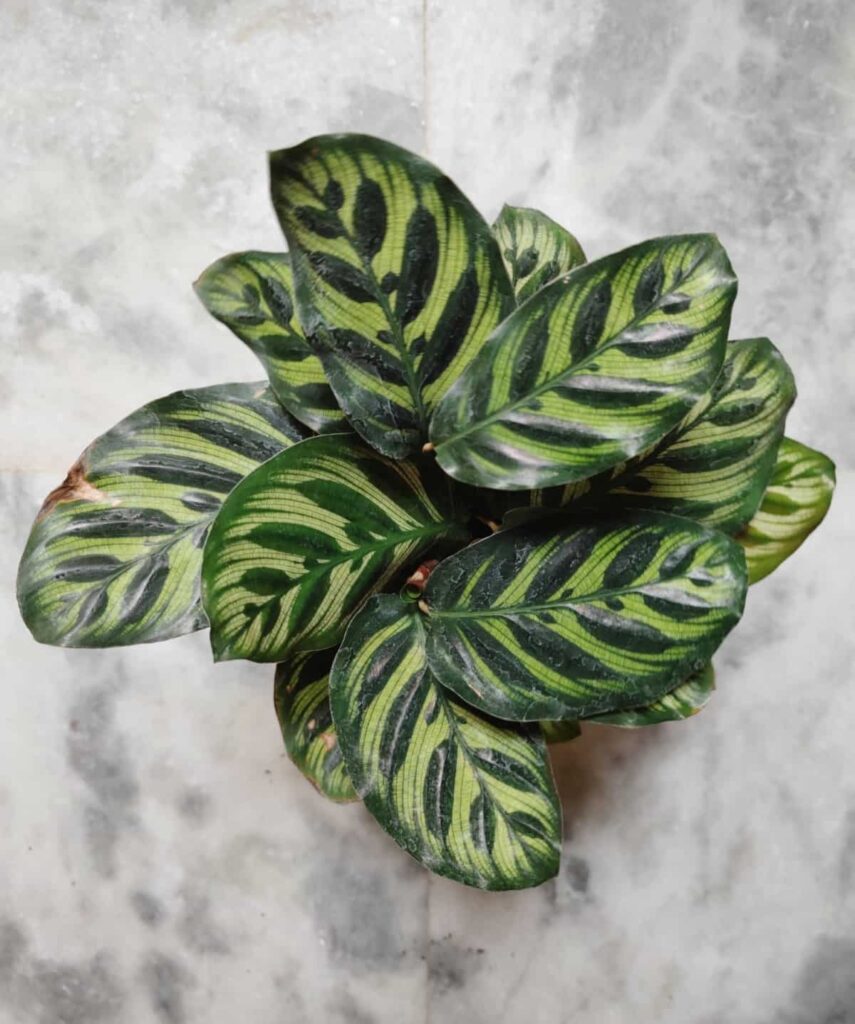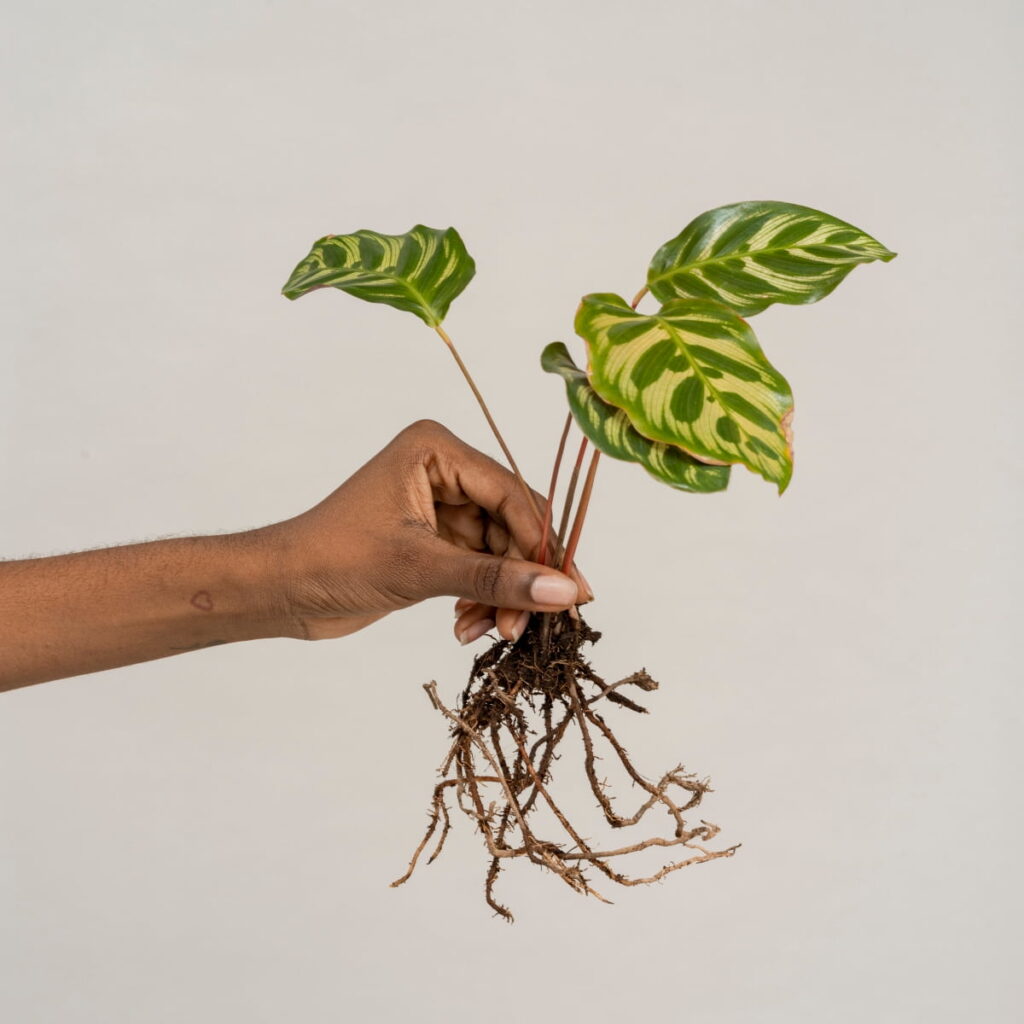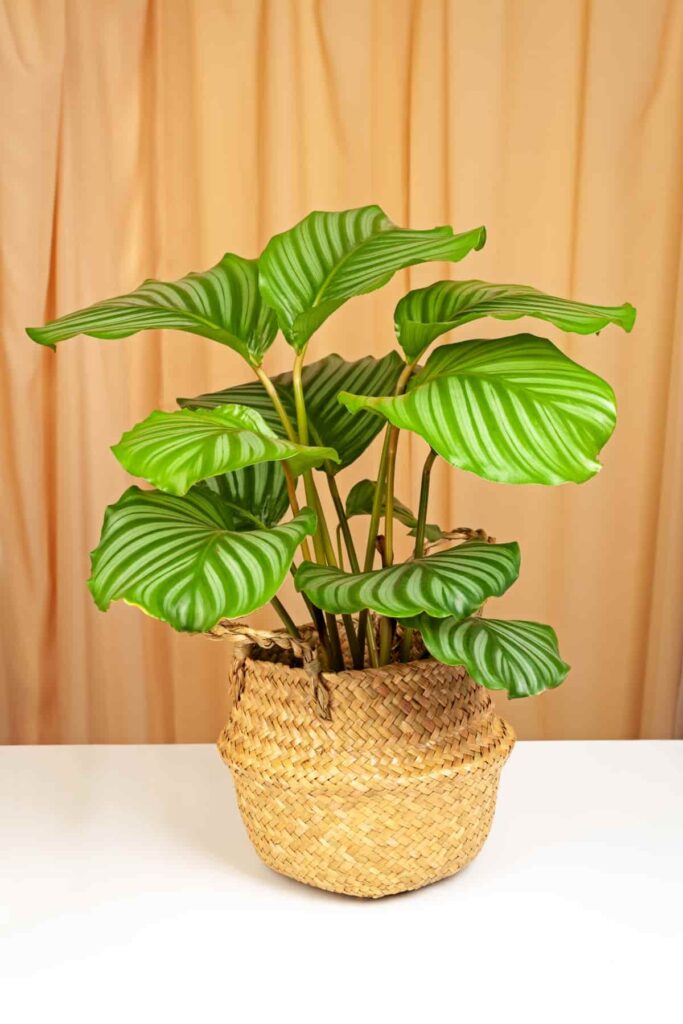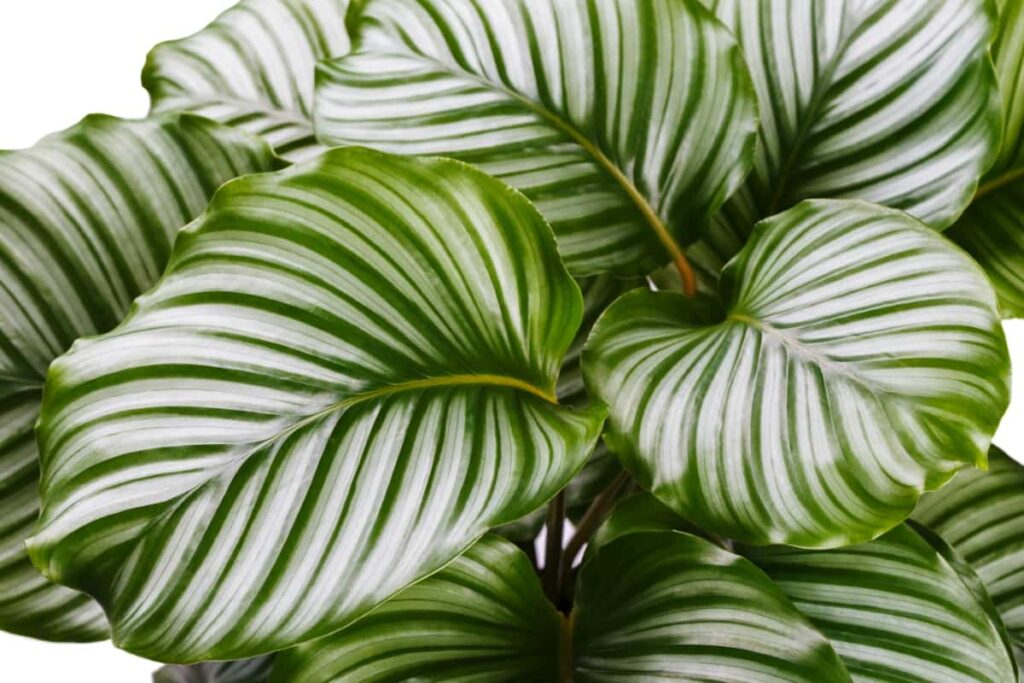The Peacock Plant, also known as Calathea makoyana, is a visually stunning addition to your indoor space and also comes with a host of benefits. This beautiful Peacock Plant is facing several issues. Well, there are a few reasons behind these problems that might be affecting your plant’s health and appearance. Understanding these problems can help you address the problems effectively and ensure a healthier life for your beloved Peacock Plant.

10 Common Peacock Plant Problems
Brown Leaf Edges
Causes
Various factors can cause this common problem. One possible reason for this browning is low humidity levels. Peacock plants thrive in humid environments, so that dry air can lead to crispy leaf edges. Another cause could be over-fertilization. Excessive nutrients can accumulate in the soil and cause damage to the plant’s delicate foliage. Inconsistent watering practices may also contribute to brown leaf edges.
Solutions
One solution is to adjust the watering schedule of your Peacock plant. Ensure the soil is moist by allowing excess water to drain properly. Another practical solution is providing adequate humidity for your plant. Peacock plants thrive in humid environments, so misting their leaves regularly or placing a humidifier nearby can promote healthy growth. Additionally, inspect your plant for pests regularly and treat them accordingly.
Yellowing Leaves
Causes
One possible cause of yellowing leaves is overwatering. Peacock plants prefer slightly moist soil, so make sure not to drown them in excess water. Another reason for yellow leaves could be inadequate sunlight. Nutrient deficiencies can lead to yellowing leaves.
Solutions
If you notice yellowing leaves on your Peacock plant, check for overwatering or underwatering. Adjust your watering accordingly and ensure proper drainage in the pot to prevent waterlogged roots. Consider fertilizing your Peacock plant with a balanced fertilizer specially formulated for houseplants to provide the nutrients it needs to stay vibrant.
Drooping Leaves
Causes
If you notice your Peacock plant’s leaves starting to droop, it could be due to overwatering. Peacock plants prefer moist soil, but they don’t like soggy conditions. Another common cause of drooping leaves is underwatering. Improper lighting can also lead to drooping leaves. Peacock plants thrive in indirect light, so make sure they’re getting the right amount of sunlight. Temperature fluctuations can stress your plant and cause its leaves to droop. Keep your Peacock plant in a stable environment with consistent temperatures.
Solutions
Try increasing humidity levels around your plant and ensure it’s not receiving direct sunlight. Trim any damaged edges with clean scissors to encourage healthy growth. Check the soil moisture – overwatering could be the culprit. Adjust your watering schedule and consider repotting if needed. Find a balance in your watering routine and make sure your plant is getting adequate light.
Curling Leaves
Causes
This could be due to underwatering or low humidity levels. Peacock plants thrive in moist environments, so dry conditions can cause their leaves to curl as a defense mechanism. Over-fertilizing can also lead to leaf curling. Excess nutrients can disrupt the plant’s natural balance and manifest as curled leaves.
Solutions
If you’re facing issues with your Peacock plant, there are solutions to help it thrive. To fix this, increase humidity levels and check your fertilizing routine. Pests like spider mites or thrips might cause curling leaves. Treat the infestation promptly using natural remedies or insecticidal soap.
In case you missed it: Nourish Naturally: 10 Best Homemade Fertilizers for Meyer Lemon Tree

Leaf Spots
Bacterial and Fungal Infections
Bacterial and fungal infections are often the culprits behind these unsightly spots that can mar the beauty of your beloved foliage. Bacterial infections typically manifest as watery lesions with a darker center, while fungal infections may appear as fuzzy or discolored patches on the leaves. Both types of infections thrive in moist environments, so ensuring proper air circulation and avoiding overwatering can help prevent their spread.
Treatment
To start, remove any affected leaves promptly to prevent the spread of the disease. Leaf spots from bacterial or fungal infections require proper treatment with fungicides. Remove affected plant leaves and improve air circulation around the plant to prevent further spread of disease. Once you’ve removed the infected foliage, consider applying a fungicide specifically formulated for houseplants.
Pests
Common Pests
Dealing with common pests can be a real headache for Peacock plant owners. Some of the most common pests that may target your Peacock plant include spider mites, aphids, and mealybugs. Spider mites feed on plant sap, leaving behind webbing and yellowing leaves.
Management
Remove any visible pests by hand or use insecticidal soap to control their population. Additionally, maintaining proper humidity levels can deter some pest infestations. Regularly inspect the plant leaves for any signs of bugs or insects, such as spider mites or aphids. If you do spot any unwanted visitors, consider using natural remedies like neem oil to keep them at bay. Another aspect of effective pest management is maintaining a clean and well-ventilated environment for your plant.
Fading Leaf Color
Causes
The fading leaf color could be due to several reasons. One common cause is inadequate sunlight; these plants thrive in bright, indirect light. Another culprit for fading leaf color could be overwatering or underwatering. Nutrient deficiencies can also lead to dull-looking leaves. Environmental factors like low humidity levels or drastic temperature changes can stress the plant, causing its colors to fade.
Solutions
Peacock plants prefer consistently moist soil but not waterlogged conditions. Ensure proper drainage for the roots to prevent water-related issues. Consider fertilizing your Peacock plant with a balanced fertilizer formulated for houseplants to provide them with essential nutrients for vibrant foliage. Check the soil moisture and consider feeding your plant with a balanced fertilizer to address any lacking nutrients. You can also increase humidity levels by misting the leaves or using a humidifier nearby.
In case you missed it: 10 Best Natural Pesticides for Fruit Trees: 100% Effective to Kill Bugs on Fruit Plants

Stunted Growth
Causes
Stunted growth can be a common issue with these beautiful plants. One of the causes could be insufficient light – Peacock plants thrive in bright, indirect sunlight, so make sure they’re getting enough light throughout the day. Another reason for stunted growth could be overwatering. Additionally, inadequate nutrients in the soil can also hinder your Peacock plant’s growth.
Solutions
Consider using a balanced fertilizer to provide them with the essential nutrients they need to thrive. Double-check your watering routine and inspect the foliage for any signs of insects. Adjustments in watering and pest management can help resolve this issue effectively.
Root Rot
Causes
Root rot is a common problem that can affect Peacock plants, stemming from overwatering or poor drainage. Excess moisture around the roots creates the perfect environment for fungal diseases to thrive. As a result, the roots become waterlogged and suffocate, leading to decay.
Prevention
One way to prevent common problems like root rot is by ensuring proper drainage for your plant. Peacock plants prefer well-draining soil to avoid waterlogged roots, which can lead to rotting. If you suspect root rot in your plant, remove the Peacock plant from its pot carefully and inspect the plant roots. Healthy plant roots are firm and white, while rotted roots will be mushy and brown or black. Trim away any affected areas with sterile tools before repotting your plant in fresh soil.
Flowering Issues
Rare Flowering
It can be frustrating when your plant doesn’t produce the vibrant and colorful blooms you were hoping for. Peacock plants are known more for their stunning foliage rather than their flowers, so it’s not uncommon for them to have sporadic or infrequent blooming periods. Factors like insufficient light, incorrect watering habits, or lack of nutrients could be contributing to this issue.
Encouraging Blooms
To encourage blooms, make sure your plant is receiving adequate indirect sunlight, as too much direct sun can hinder flowering. Ensure you’re following a consistent watering schedule and providing a balanced fertilizer to support healthy blooming cycles. To promote flowering, ensure your plant receives adequate sunlight – about 6-8 hours per day is ideal.
In case you missed it: 10 Best Natural Pesticides for Weed Plants: 100% Effective to Kill Weeds

Conclusion
Peacock plants are relatively low-maintenance compared to other houseplants, making them ideal for busy individuals or beginners in gardening. With the right care and attention, these plants can thrive indoors without requiring constant monitoring. The Peacock Plant, with its striking patterned leaves reminiscent of a Peacock’s tail, brings a touch of exotic beauty to any indoor space.
- Profitable Village Farming Business Ideas in 2024
- High-Yield Aquaculture: Fast-Growing Fish for Farming
- Effective Fish Pond Construction Techniques for Beginners
- Irrigation and Water Management in Pineapple Farming
- Blossom to Harvest: Mastering Flowering and Pollination in Papaya Farming
- Pig Fattening Essentials: From Selection to Sale for Beginners
- Raising Wagyu Cattle: A Complete Guide for Premium Beef Production
- Soil Types and Their Water Holding Capacity
- Optimizing Irrigation Schedules for Coconut Groves for Enhanced Yield
